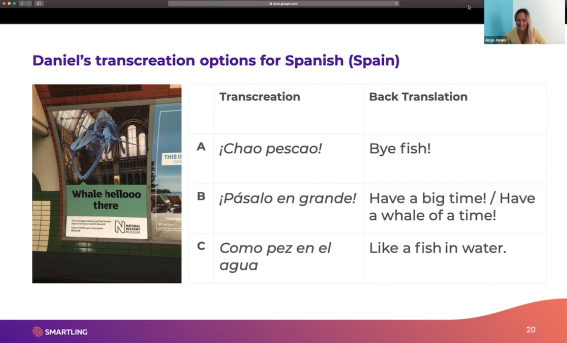If you throw a dart at a dartboard and don’t hit the center, it’s okay. You’re having fun and enjoying the sport.
But you can’t afford to miss the bull’s-eye in technical translation projects. These translations must maintain their intended meaning in any language or dialect. That's hard, especially considering how complex human comprehension is when diverse dialects, cultures, and trends influence how others understand technical terminology and messages.
But your translations don't have to miss the mark. Accurately localized translations can provide the same precise, high-quality communication in Spanish, German, French, Japanese, or Chinese as in English. They also ensure increased sales, safer operations, more efficient processes and documentation, and stronger relationships with key stakeholders.
In this article, we’ll find out how to get technical translations right the first time with high-quality translation services. But first, let’s take a look at why accurate technical document translations seem almost impossible to scale.
Why are technical translations so challenging?
Technical documents require precision and consistency to ensure accuracy, safety, and efficiency in daily operations. When a second, third, and fourth target market come into play, you’ll need to translate your content into new languages. Your global teams need the same accuracy, consistency, and attention as your English-speaking team, no matter if they speak Chinese, French, Spanish, or German.
Humans are complex. Many factors influence how they perceive language. As a result, while you could provide a word-for-word translation, your multilingual employees, customers, and stakeholders might come away with a different message than you intended.
For example, in 2006 and 2007, a medical device company provided German medical professionals with English labels for knee prostheses, leaving the staff to translate for themselves. The Medical Writing publication from the European Medical Writers Association recounted the tragedy in its March 2024 issue:
“The responsible hospital staff then wrongly translated the ‘non-modular cemented’ (porous) information from the English label to ‘non-cemented’ or ‘without cement’ (smooth surface) in German. This translation error contributed to the failed total knee replacement of 47 patients between 2006 and 2007—showcasing the importance of accurate translation in medical material content.”
It’s easy to see how literal translations can convey an entirely different meaning without cultural context. Some companies still attempt these translation methods, hoping that the documents’ intended meaning stays intact. But it’s like taking a shot in the dark.
Technical industries can’t take that chance, whether they’re conducting clinical trials for medical technology, building products in automotive sectors, enhancing engineering, or operating in any industry with high costs, safety, and efficiency at stake. That’s why businesses should make accurate, consistent translations a priority.
Accuracy demands spot-on translations, transcreation, and localization. Let’s take a look at those last two concerns next.
How localization and transcreation fit in
In the same Medical Writing issue that discussed the knee replacement error, the editorial team explains that “while English is one of the most widely spoken languages globally, it cannot replace the richness of over 7,000 spoken and signed languages worldwide, each with its unique intricacies and cultural nuances.”
This is why companies need to dedicate more attention and resources to nuanced translations that avoid costly errors and setbacks.
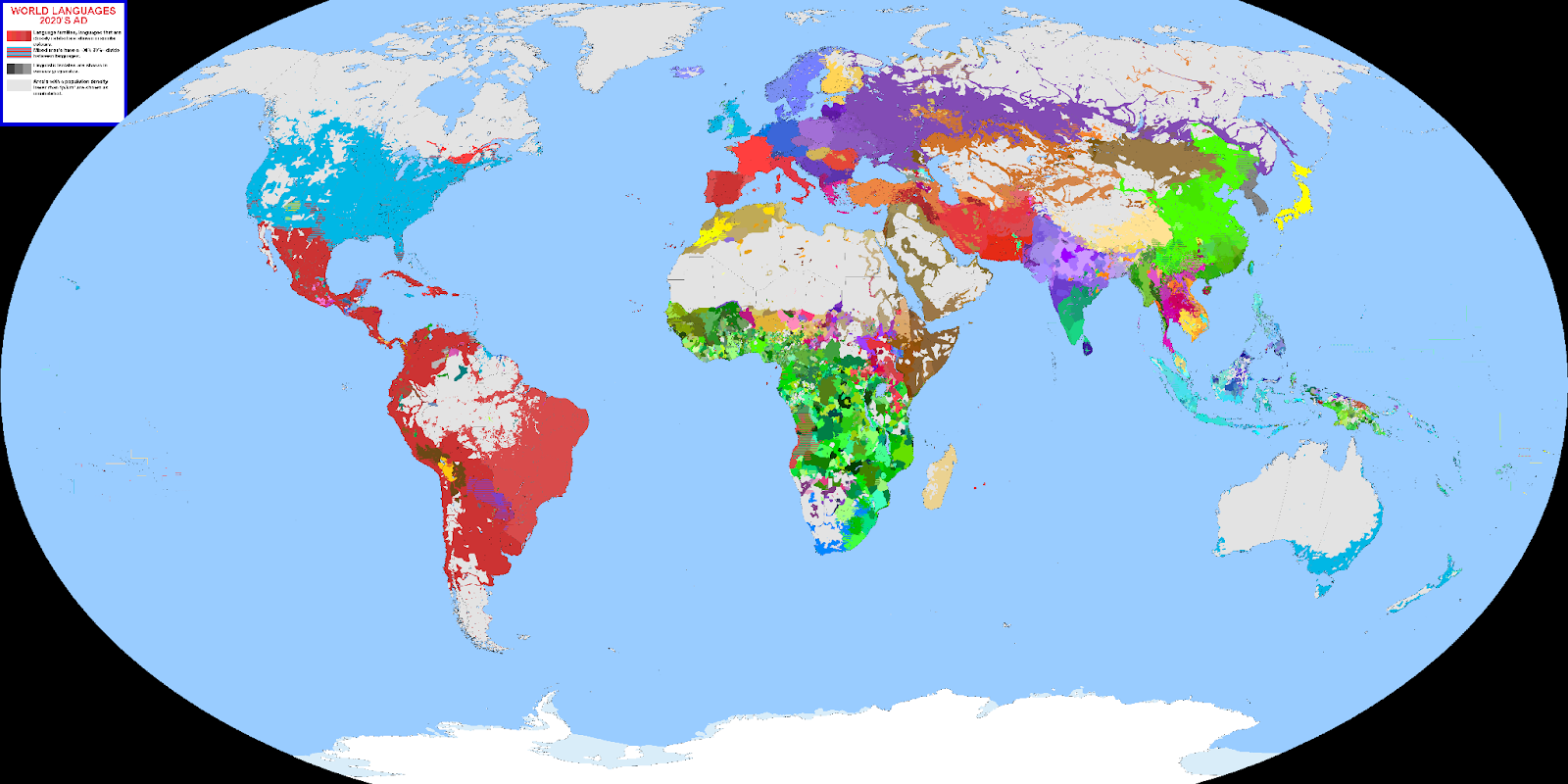 This language map shows the many languages around the world, emphasizing similarities and differences with different shades of colors. (Source)
This language map shows the many languages around the world, emphasizing similarities and differences with different shades of colors. (Source)
Accurate content translations require a holistic approach to transforming content while incorporating audience perceptions. So what do accurate content translations look like beyond general translation? Two critical processes solve cultural and language barriers in translations.
First, localization adapts content to meet global cultures’ nuances and complexities.
For example, if you translate documents for a Middle Eastern team, audiences will read your Arabic and Hebrew translations from right to left. You must consider formatting and measurements for these scripts, which might differ from your source language.
Localization ensures that your technical materials remain transparent and accurately convey your original meaning. One out of place word or phrase could alter how someone perceives directions, instructional documents, or technical materials—which can be inefficient, costly, and dangerous in technical fields.
Sometimes, expert linguists need to move beyond localization to convey the correct meaning. Transcreation does this by combining “translation” and “creation.” In this process, localization experts create new technical content to clarify your communication and increase comprehension for local audiences.
Whether you’re working with engineers, researchers, or professionals who need technical information, you want everyone to be on the same page. Transcreation ensures that everyone understands the intended meaning by adding content to clarify the point or offer consistent understanding across different languages.
A solution like Smartling can provide both the language services and technology you need to produce AI translations with human input and localize and transcreate content where needed.
Which industries need technical translation services?
Industries that deal with highly technical information, such as software engineering, mechanical engineering, finance, data, medicine, and research, must translate content into different languages at scale with the highest possible accuracy.
A lot is at stake among team members, industry partners, and customers. For example, one wrong translation or incorrectly perceived meaning could lead to expensive mistakes, inefficiencies, and a loss of business—and it could even cost lives.
In a global economy, companies need a fast, accurate translation services provider to ensure that their translations are above reproach and communicate effectively, leaving no room for confusion. Not only do all global industries need accurate and consistent translations, but they also need to quickly translate hundreds of different types of communications and materials.
Different types of technical translation needs
There are many use cases for translations in customer and stakeholder interactions. Here are several instances where accurate content translations are essential:
1. User manuals and customer resources
Companies need accurate translations to effectively communicate with their teams and stakeholders, whether it’s through user guides, technical specifications, charts, or wireframes.
Translations are also critical for customer-facing documentation, such as application programming interface documents for integrations, how-to support materials, operating manuals, and device troubleshooting instructions.
2. Training and technical process documents
As companies grow, they work with more teams from different cultural backgrounds, whether at their headquarters or other sites worldwide. To maintain consistent and efficient processes, companies need to ensure that their training documents are the same across cultures and languages.
3. Investor and corporate documents
Translations are imperative for technical services and areas like legal documentation, liability forms, and finance reports. Technical translation services localize this content so it’s clear and understandable for the different governing bodies and stakeholders that companies work with worldwide.
4. Quality assurance documents and safety sheets
Maintaining quality can be difficult, especially when small factors make a big difference. Translations ensure that everyone understands expectations and areas for improvement.
Quality control is essential, as is safety. You can document safety data sheets for handling, storing, and disposing of hazardous materials, as well as other data types, to guarantee that everyone is safe and that your company remains productive.
5. Customer support
Clients and customers should have positive support experiences, no matter what language they speak or culture they’re from. This is the best way to maintain a positive reputation and nurture customer relationships.
Whether you use an AI chatbot, communicate through email support, or provide articles to answer common questions, you need localized translations to provide effective customer support and connect with buyers.
6. Technical marketing content
Marketing teams often interact with technical audiences when promoting your company’s product or service. They have to dive deep and speak on the same level as potential customers.
As technical experts evaluate your offerings and ask hard questions, marketing and sales teams can answer with translated marketing materials and emails. In this way, they can connect with all customers, regardless of their language, and increase sales.
Another translation needed for marketing is website translation. Your website is often the first impression you can have on potential customers. Translation services are imperative for customizing website experiences for multilingual audiences.
Maintaining technical translation accuracy across content
It can be difficult to pick the right translation solution. The best way to start is by avoiding a manual translation process, which can be slow, costly, and prone to error. Instead, technical companies can adopt an AI-powered human approach that aims for these three translation goals:
- Accuracy: Translations should be crystal clear and should extend beyond word-for-word translation. Stakeholders, regardless of their culture or context, should understand the intended meaning.
- Speed: Fast translations prevent communication delays and gaps in rapidly changing technical fields.
- Affordability: Companies have a lot of content to translate, so the translation process should be scalable for teams and companies as they grow.
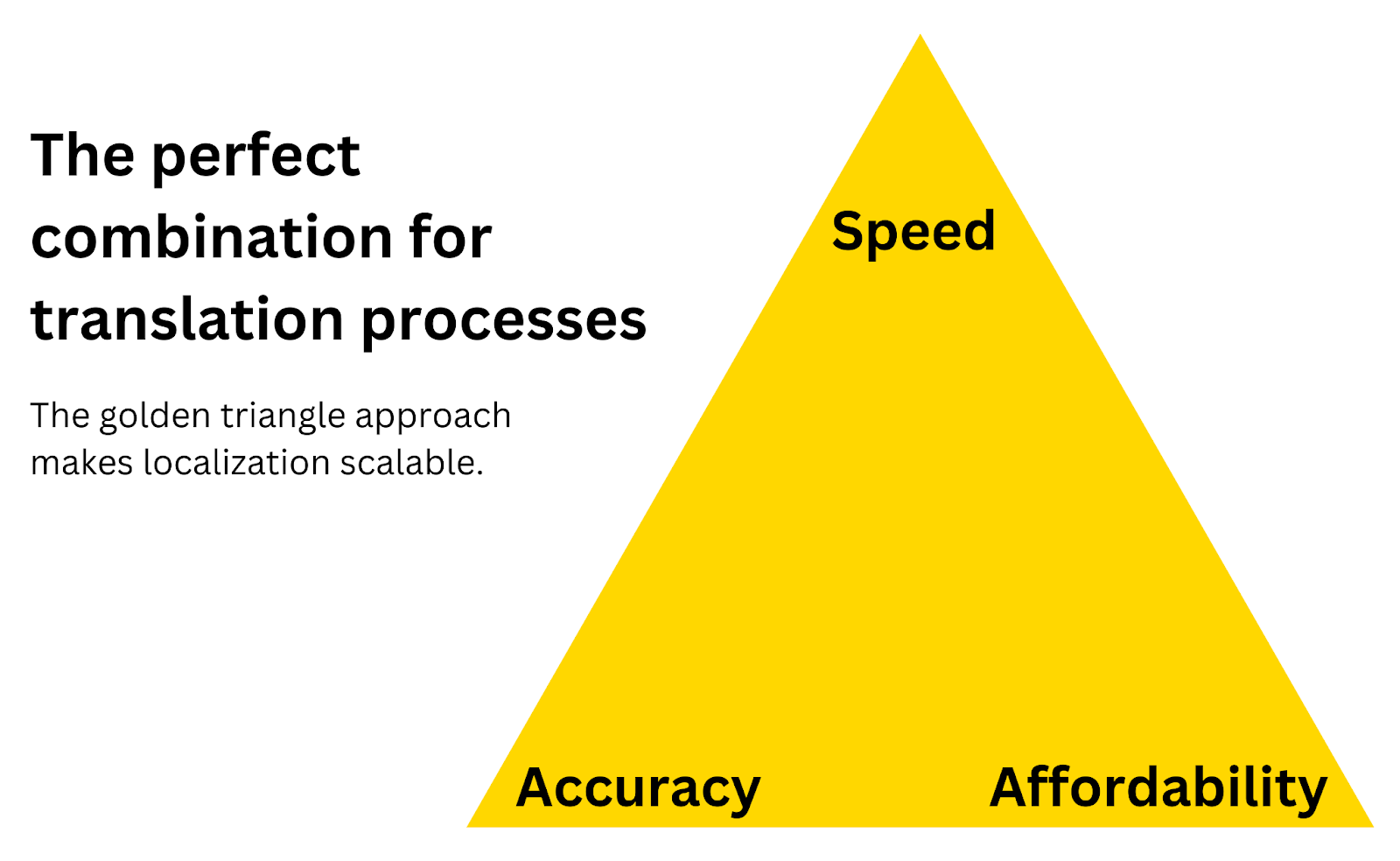 Also known as the Golden Triangle of translations, these three pillars are the standards to which companies hold a high-quality translation process. (Source)
Also known as the Golden Triangle of translations, these three pillars are the standards to which companies hold a high-quality translation process. (Source)
AI translation solutions like Smartling produce fast translations at lower costs with machine translation, a translation management system for a more efficient workflow, and professional human translation services. Translations will always need a human touch, so Smartling incorporates local linguistic experts to partner with AI and provide all three pillars of scalable translations mentioned above.
Human, native-speaking expert translators can revise translation projects to localize and transform content for clear comprehension. You can also build your translation memory so AI can implement approved translated phrases in the future, creating improved translations that leave no room for misunderstanding.
Companies can translate effectively at scale by adopting AI-powered human technologies. But the real challenge is choosing a solution that offers end-to-end services.
Choosing a high-quality technical translation service
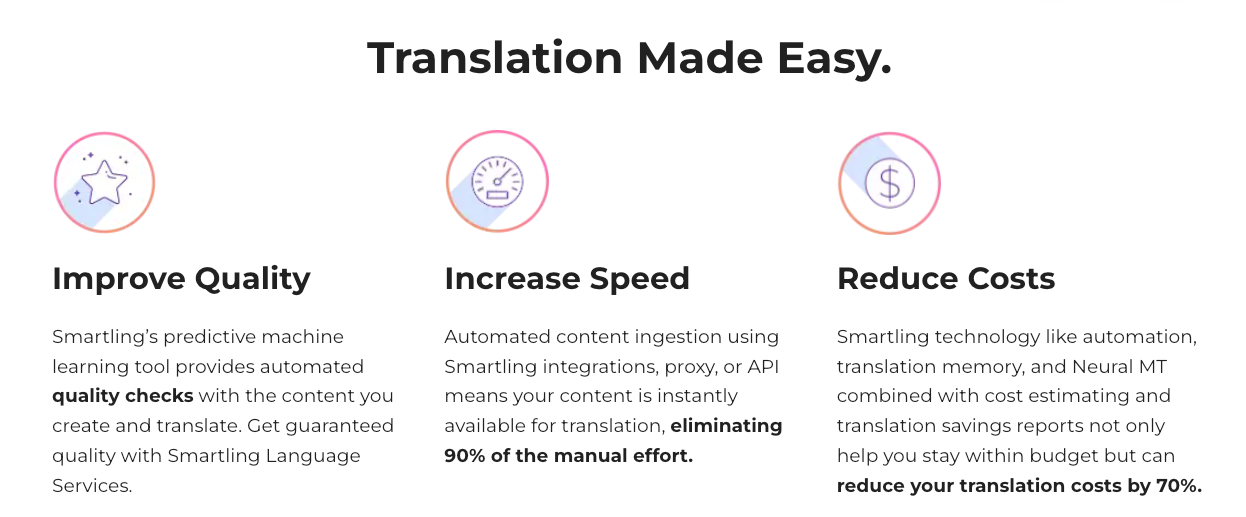 Smartling streamlines technical translations to save on costs while increasing speed and improving quality. (Source)
Smartling streamlines technical translations to save on costs while increasing speed and improving quality. (Source)
Not all tools are equal. Some translate content but fail to offer human expertise for complete localization. The best solution provides all the translation tools you need, as well as professional language services to streamline your processes.
Suppose you leverage the latest tech, manage your translations, and employ a team of linguists to localize and revise input. In that case, you can have the confidence that your translations always hit the mark—whether they’re in Portuguese, Russian, or any other target language.
How Smartling enables accurate technical translations
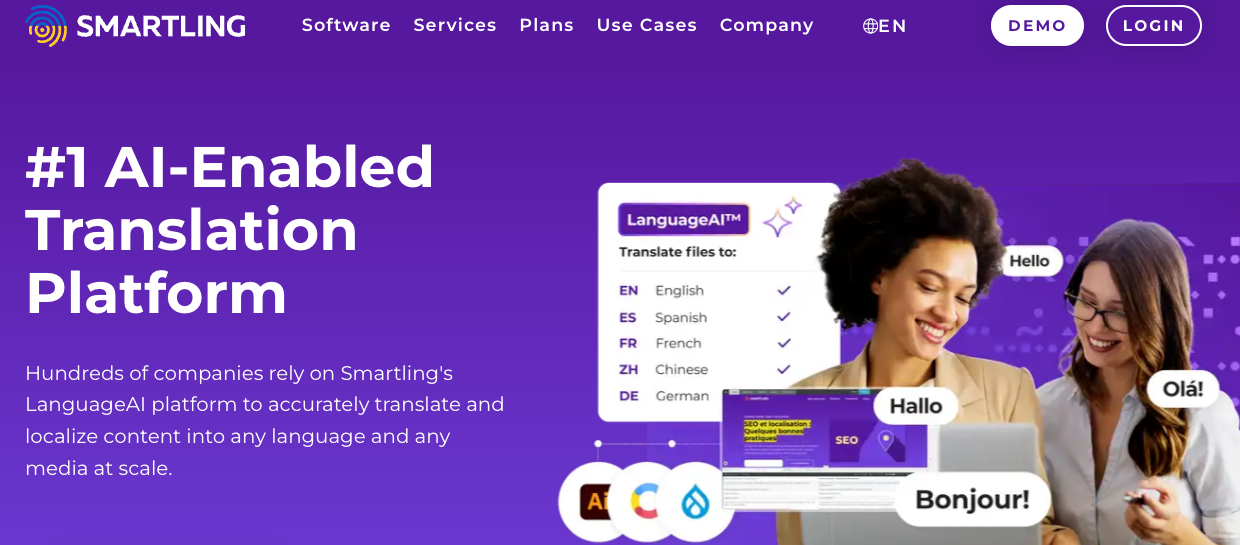 Smartling is a technical translation services provider that provides high-quality translations at scale. (Source)
Smartling is a technical translation services provider that provides high-quality translations at scale. (Source)
Smartling is the all-in-one solution you need for accurate technical translations. It integrates technical terms and industry-specific jargon with precision and consistency so anyone, regardless of their culture or language, can understand your materials. Smartling’s tools and services also accurately localize your technical documents, such as user manuals, product specifications, and datasets.
You can leverage Smartling’s machine translation technologies for quick translations in seconds. Smartling’s translation management system also provides a workflow built for speed and efficiency. These tools, as well as Smartling’s team of expert native-speaking translators, provide your company with accurate, affordable, and fast technical translations at scale.
Ready to learn how you can translate technical documents to grow your company, communicate more effectively, and improve your teams’ productivity? Book a meeting with Smartling today.
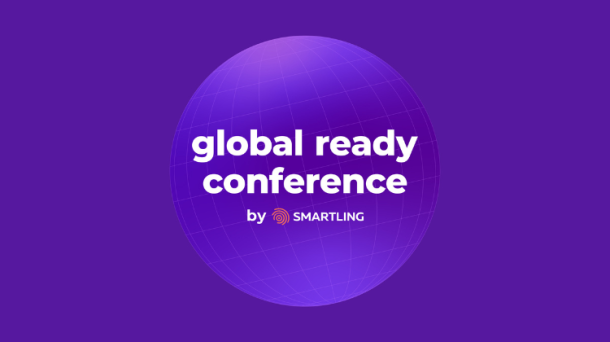
.jpg)

